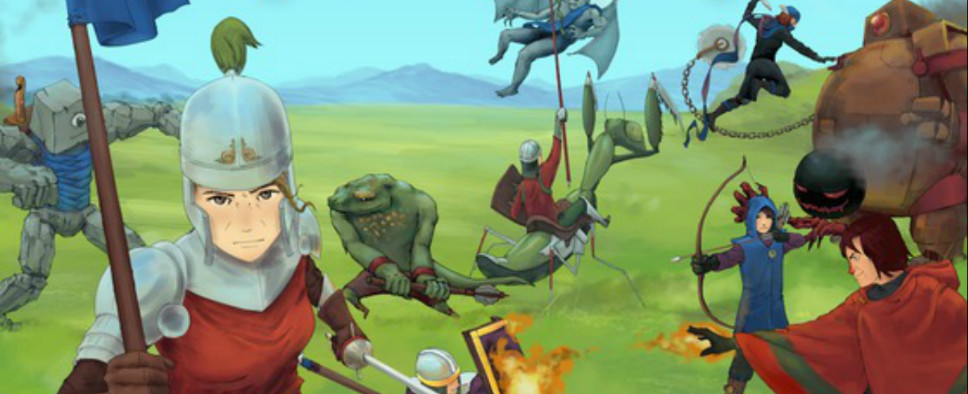Telepath Tactics Review
-
Category: ReviewsHits: 10267

Article Index
Telepath Tactics is a tactical turn-based strategy game -- with RPG elements, of course -- from Chicago-based developer Sinister Design. The introduction to the game compares it to the likes of Fire Emblem, Disgaea, and Eternal Poison, but not only have I never played any of those games, I had never even heard of them until I started reading Telepath Tactics' manual. So possibly I'm the completely wrong person to be reviewing this game, or, if you're like me and there's apparently a chink in your tactical RPG armor, then perhaps I'm just right.
In Telepath Tactics, you control a pair of sisters named Emma and Sabrina Strider. Years ago they escaped a slave mine run by evil Shadowlings, and now years later they want to return to the mine so they can rescue their father and free the remaining slaves. Along the way they meet a veritable army of companions -- about 25 in total -- and their travels put them into conflict with highwaymen, street thieves, mercenaries, and of course the Shadowlings' hired thugs.
Emma and Sabrina are a special "hero" class, which means they are essentially fighters, capable of using swords, shields and heavy armor. There are 23 other types of characters, including Engineers (who build barricades and bridges), Cavaliers (who ride on giant insects), Psy Healers, Bowmen, and Assassins. There are even monsters, including Spriggats who fly and deal elemental damage, robotic Golems who are tough to kill, and wispy ghosts. The variety to the characters is nice, but you're not allowed to adjust them in any way. When characters gain levels, they automatically gain bonuses based on their type, and that's that.
The campaign for Telepath Tactics encompasses 24 missions. Each mission comes with an introduction to explain where you are and why fighting is about to break out, and then you're allowed to choose which of your characters will participate and what equipment they're going to use. For most of the missions enemies charge at you and you have to withstand their attacks, but in others enemies just hang around and wait for you to show up. In only one mission do you walk around and talk to people.
Combat takes place on a square grid. When it's your turn, you can direct all of the characters in your party in any order you want. Each character can move and attack -- or perform some other activity -- on their turn. For most characters attacking ends their turn even if they have moves remaining.
Most attacks can only target in the cardinal directions, and all characters can backstab for extra damage. That means you have to be careful about how you position your party. It's always better to keep your party together because solo characters die quickly due to backstabs (especially if they can retaliate, which causes them to face their attacker). A "wall" of tough melee attackers can also prevent enemies from reaching and damaging your wimpier healers and ranged attackers.
As characters advance in level, they gain additional combat moves. For Emma, this means she can eventually Shove (push a character back one space, ideally into water or fire so they take extra damage), Sprint (move farther on her turn), Motivate (give an ally an extra turn), and Double Strike (attack twice). When characters reach level 20, their class changes to something more powerful, which means they can use better weapons or cast better spells. There isn't a level limit in the game.
If a character dies in battle, then that death is permanent (on the normal difficulty) or costs the character some of their maximum health (on the casual difficulty). That's one of the reasons why you find so many companions, so you can lose a few along the way and still finish the game. However, Emma and Sabrina are considered to be core characters. If they die, then the mission ends and you have to load your game.
Interestingly, characters gain experience based upon what they do during missions. Attacking an enemy gives experience, killing an enemy gives even more experience, and some other spells and activities (such as healing) give experience as well. This is a fine idea in concept, but in practice it has some problems. Since so much healing needs to be done, my healers dramatically outgained all of my other characters (my main healer was almost twice the level of my main tank), and since retaliating gives experience, my retaliating fighters had an easier time gaining levels than their non-retaliating brethren. But the main snafu is with buffs. If characters don't do anything on their turn, then they regain some energy. So they can rest, buff an ally (for experience), and then repeat ad nauseum for as much free experience as you care to give them. This is something Sinister Design really needs to fix.


